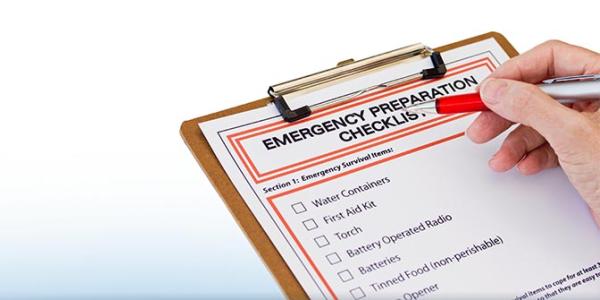
Here are some tips to prepare you and your family for heavy rain and flash flooding:
Driving in Rain
Wet pavement contributes to nearly 1.2 million accidents per year. Prepare your car in advance of a rainstorm by making sure windshield wipers are in good working condition. Tire treads should also be the proper depth to provide good traction on wet roadways.
In a rainstorm, be sure to:
- Turn on your headlights. Rain impedes visibility. By turning on your headlights, other drivers are more likely to see your car.
- Turn off your cruise control. When roadways are slick, cruise control impairs your ability to adjust speed quickly. You should be in full control of your car when the rain falls.
- Slow down to avoid hydroplaning. At speeds as low as 35 miles per hour, tires can lose contact with the roadway during a rainstorm.
- If you begin to skid, avoid hard braking or turns, which can also contribute to hydroplaning. Try to remain calm and continue looking and driving in the direction you would like the car to go.
Preparing Your House for Rain
A little preparation goes a long way to take care of your home during heavy rains. Here are some tips to keep your home safe and dry:
- Get your roof and gutters inspected to ensure good condition before the rain falls. Remove leaves or debris from gutters throughout the year.
- Check the inside of the house to be sure there are no signs of water leaks—mold, water rings, or paint discoloration. Make any necessary repairs.
- Check doors and windows to ensure they seal properly.
- Purchase hurricane socks, which can absorb a gallon of water at a time, for a leak-prone garage.
- Prune dead branches from trees in your yard, which can fall on or around your house during a storm.
- Have sandbags on hand for low areas of your house to keep water at bay during a flood.
- In a flood, move furniture to higher floors to prevent water damage.
Staying Safe During a Flash Flood
Emergency preparedness is the best way to keep you and your family safe during a flood. The following tips will help you prepare for the worst:
- Listen to local weather stations during storms for possible flood warnings.
- If there is a flood in your area, get to higher ground and stay there until it’s safe to return.
- Steer clear of flood water. As little as six inches of moving water can sweep you off your feet. Keep children away from flood water too.
- If approaching a flooded road by car, turn around. Cars can be swept away by less than two feet of moving water. If you cannot turn around and water is rising around you, get out of the car quickly and move to higher ground.
- Homeowner’s insurance doesn’t usually cover flooding. Know the flood risk in your neighborhood and buy additional insurance if necessary.
- Assemble an emergency supply of food, water, and other necessities. For a list of suggested supplies to have on hand during a flash flood, visit redcross.org.
This article first appeared in the November 2015 edition of the HealthPerks newsletter and was updated in February 2024.

